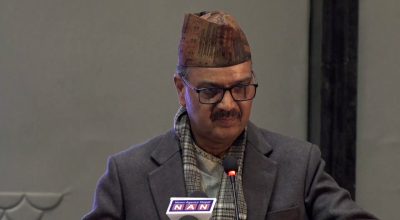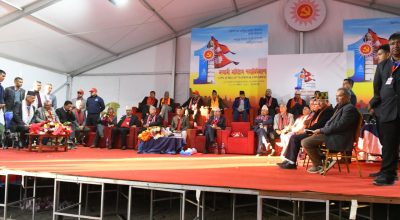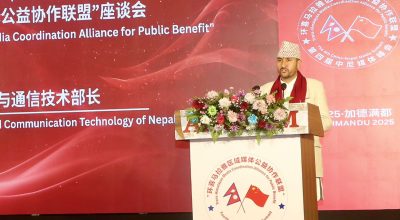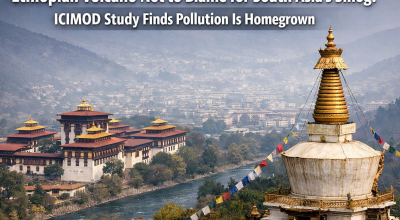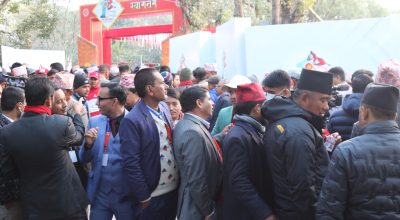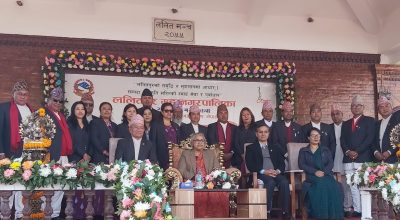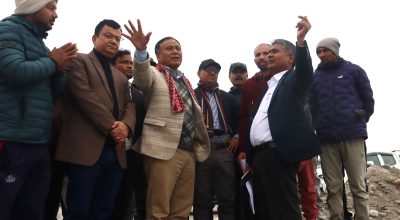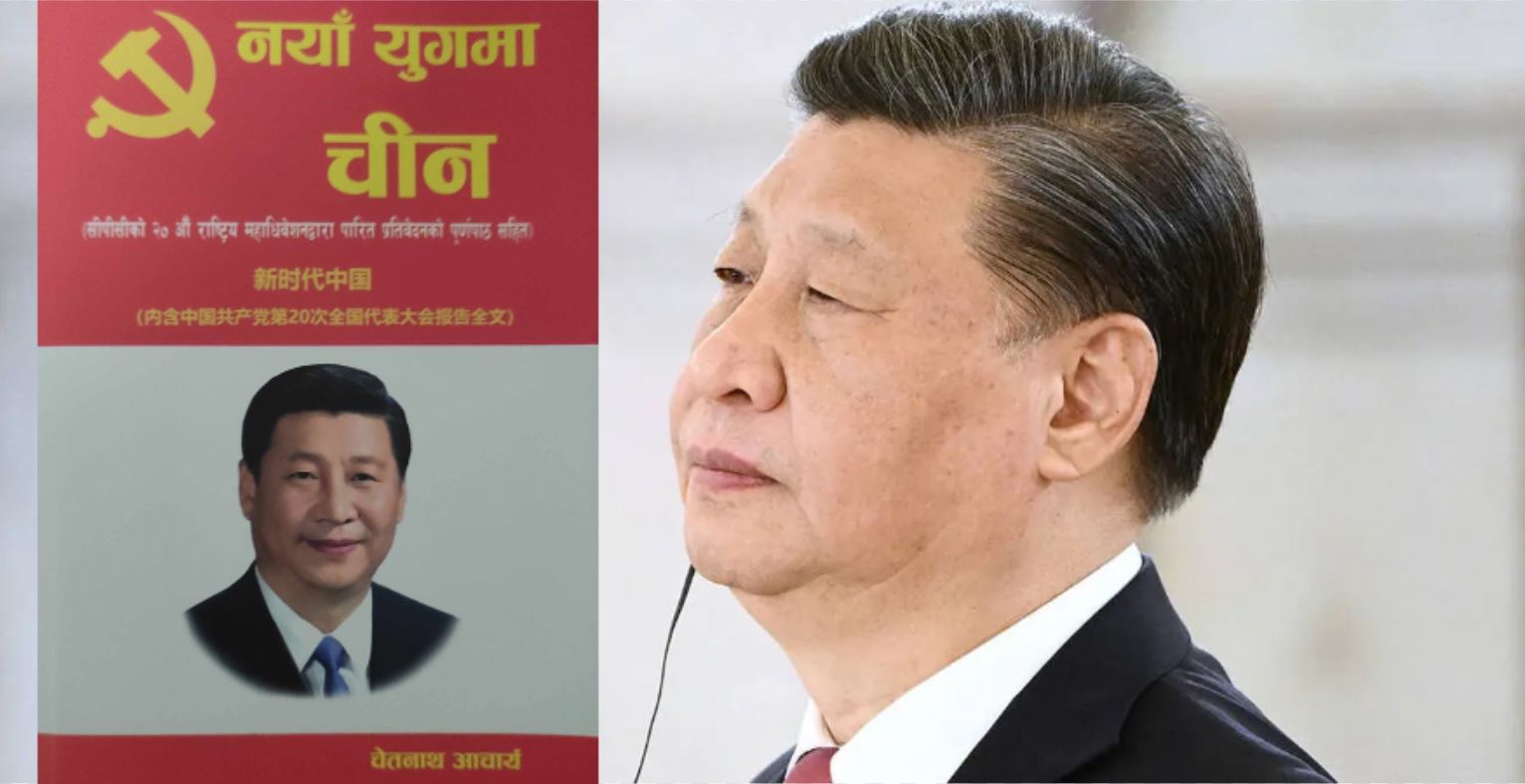
Kathmandu, Aug 15: The present day China is no longer a land of mystery, but obviously is less explored by several human-made miracles. The miracles that serve as China’s images have blurred the popular proverb of the past that said ‘Rome was not built in a day’, replacing it with ‘China is rebuilt in just four decades’.
For many outsiders, understanding China, its society, economy, political system and political leadership is always an intricacy given different circumstances. The book under review reflects that the western countries that attempt to politically other China create a gap in understanding China and its real picture.
However, recent years have come with some anecdotes that push the entire world to know more about China, the dream of its political leadership, China’s technological advancement, new narratives developed by China, the flagship project of the Belt and Road Initiative, and others.
For the revelation of such issues, journalist Chetnath Acharya has penned his new book ‘Naya Yugma Chin’ (China in the New Era). The book that hits the bookstands across the country offers thoughtful information about China and obliges readers to contemplate on tremendous achievements made by China in a short span of time.
The book consists of 26 articles on China’s history, politics, scientific advancement, the journey of the Communist Party of China (CPC), the major milestones of the CPC and the most recently held 20th National Congress of the CPC with concise information.
The book delves into the poverty alleviation drive in China and BRI, the ongoing narratives of the debt trap, the agriculture system in China and others too– all very pertinent topics for Nepali political leaders, civil servants and policy planners.
In a chapter on President Xi Jinping’s move on Poverty Alleviation and BRI, the writer states that China brought almost 100 million people out of poverty after Xi’s accession to power in 2013 and achieved the SDG’s goal no. 1 a decade prior to the target. In activities to poverty alleviation, China applied some key measures including reforms in the rural economic system, balanced regional development, consortium efforts for poverty alleviation, innovation, micro-credit for enterprise development, environment-friendly innovation, development of security networks for social protection and social security schemes. As argued by Acharya, China invested 19.6 billion plus RMB in the past five years alone for the poverty alleviation campaign where the CPC cadres and the government officials were mobilized to achieve the target.
A whole chapter is dedicated to a ‘shared future for BRI’, where the writer argues that BRI has offered massive returns to the world in the past 10 years. Though sufficient data are not shared, the writer argues that BRI has stood itself as the most extensive and greatest international cooperation platform in the present world.
In this topic, the book talks about Nepal’s participation in the BRI, the flagship development programme of President Xi Jinping, and possible benefits to Nepal. However, the writer has cleverly skipped the issues of challenges that the BRI has to encounter in Nepal in its implementation. The book states that China has founded a Silk Road Fund worth $40 billion and Nepal could immensely benefit from the Fund.
Likewise, the writer has tried to give more emphasis to a certain section of Nepali political leadership in the advancement of the BRI, but skips the issues of Nepal’s journey to BRI since its inception in 2017 when Prime Minister Pushpa Kamal Dahal ‘Prachanda’-led government signed the MoU on BRI and officially joined the President Xi Jinping’s development flagship programme. Also, the writer misses the historic visit of Nepal’s President Bidya Devi Bhandari and her participation in the Second Belt and Road Forum in 2019, which cleared several confusions on Nepal’s journey to BRI.
Advocating the need for BRI advancement in Nepal, writer Acharya brushes aside the allegations of debt trap labelled against BRI and mentions that BRI is an economic opportunity and is founded on a few fundamental principles of economic development and partnership.
Despite loose writings and several repetitions, and some cultural and linguistic gaps in the translation of other sources’ text into Nepali, the book offers plenty of food for thought on China, the world’s second-largest economy and second most-populous nation. Likewise, though the book provides information on key pillars of Chinese society, the writer has paid less attention to the analysis part and remains silent on the possible results of China’s development and the spillover effects to the outer world. The readers would also realize the missing parts about the major contradictions of Chinese society and the current challenges China is facing.
On political agendas, the book shows a path that the CPC is heading for the establishment of socialism with Chinese characteristics by developing the country in all respects where China wishes to bury all the stories of repression and humiliation that it witnessed in the 18th century during the time of the Opium War.
In a nutshell, the book is a wonderful read to understand modern China, its society, the hardworking people, disciplined party cadres, the dedication of the entire 1.4 billion people and the nationalistic feelings of the citizens to building a nation that other countries lack.
The writer himself has stated that the texts written in this book were cited from different Chinese media and other sources. Given this context too, the book is useful for Nepali readers, since the book has localized a lot of information to fit the Nepali context. Therefore, this book by journalist Acharya is a window to understand China and its political leadership’s psyche amongst others at a time when the world is witnessing geo-political tremors and expecting a new departure in the global power shift. (RSS)






